History of beaks in birds
Birds have beaks, but they’re not the only ones. Turtles have them, and so did a bunch of extinct dinosaur groups, but birds are by far the most diverse group of beaked animals, with more than 10,000 living species with an amazing variety of beak shapes and functions.
This has left many a scientist wondering exactly how Birds got their beaks and also why.
After examining many fossils later, they’re starting to put together a fascinating explanation about the origin of beaks.
How beak first formed from teeth?
Many early birds shared major skeletal characteristics with coelurosaurian (hollow-tailed lizard) dinosaurs, they also shared a similar egg structure, and some had feathers.
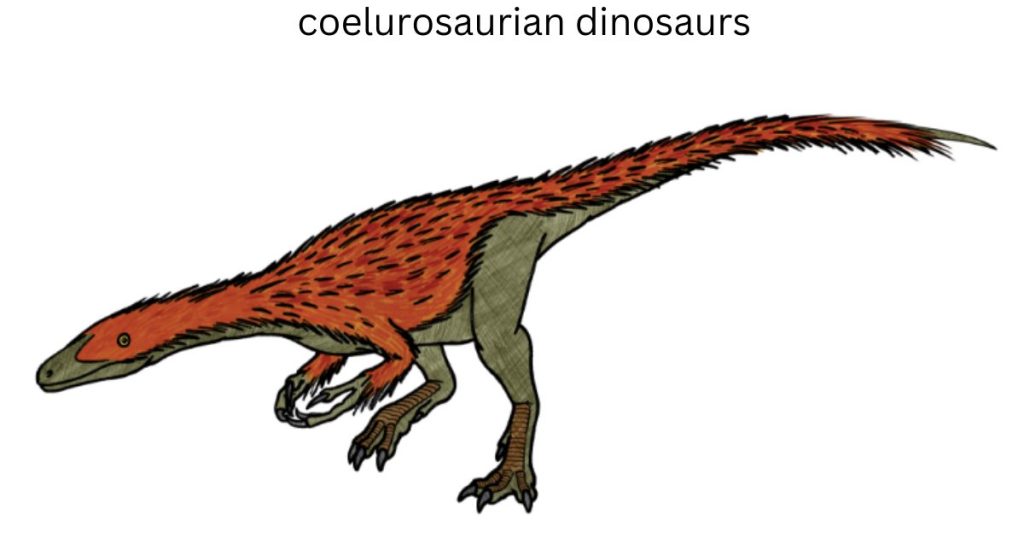
As birds evolved, improvements in flying ability required morphological changes, such as the need to weigh less. Teeth became smaller and reduced in number until they finally disappeared. Lighter bills, both hooked and serrated, replaced heavier teeth.
How bird body adopt to digest the food swallowed without teeth to chew?
Along with bills, birds developed other ways to grasp prey, such as tongues and feet with spines or prickles. Whereas toothed mammals chew food to begin digestion, birds snatch and quickly swallow food like insects, nectar, fruit, worms, and seeds. To accommodate these changes, the feeding mechanisms of birds became specialized not only in the form of beaks but, further down, bellies.
How beaks fully formed?
Today birds may not look much like reptiles, but their ancestors were very reptilian, they had scaly bodies, clawed limbs, and snouts full of teeth, but as birds evolved, besides gaining wings and other adaptations, they turned those snouts into beaks.
This change involved restructuring the bones of their jaw. Many reptiles have a pair of small bones at the tip of their upper jaw called premaxilla, but in birds, these bones are fused into one much larger piece, and the jaws are covered in a keratin sheath. This is all a big part of what makes a beak.
Can birds go back to dinosaurs?
While studying developing chicken embryos, researchers identified a sequence of the genome that’s active during facial development, and when they interrupted that genetic activity, the beaks of those embryos didn’t fully develop, instead the premaxilla remained separate and rounded much more like the snouts of modern reptiles and birds reptilian ancestors. Evolution is complicated, and birds evolved. These features adapting the environment and lifestyle only if it faces a dramatic change reverse case is not possible.
When and Why those changes happened?
In 2018, scientists described an exquisite fossil, a nearly complete skull of a Late Cretaceous bird from Kansas named Ichthyornis dispar.
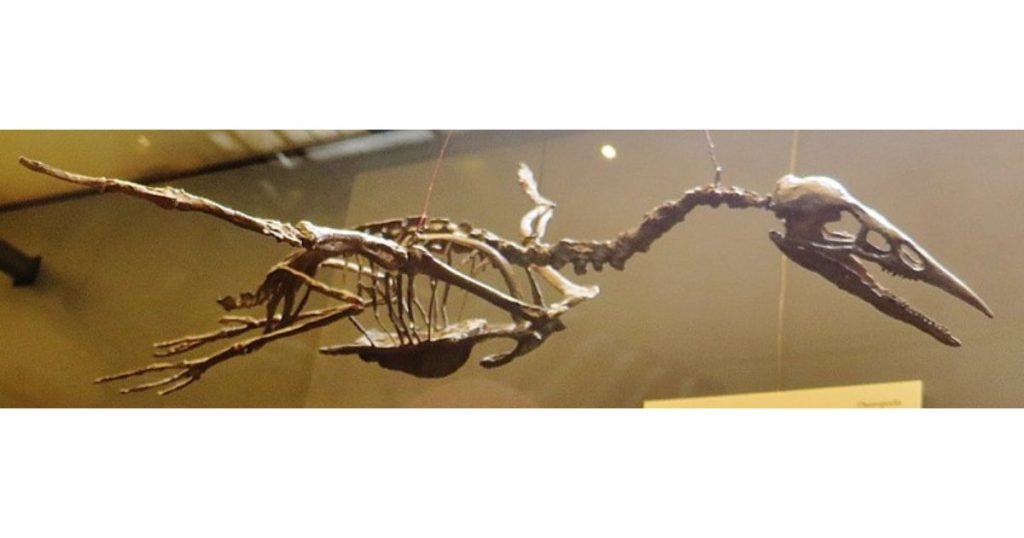
This skull helped them get a better-than-ever view of the bird’s face, revealing a mixture of bird-like and reptile-like features. Its premaxilla was fused together, lacked teeth, and was hooked at the end, as we see in birds. The bone had passages for blood and nurse to flow to a keratin coat, also like modern birds but on the other hand, the premaxilla was small. The rest of the mouth was full of teeth, classic reptile traits, so Ichthyornis seems to sit partway through the transition from snouts to beaks which is an amazing thing to find. It already had a flexible skull like modern birds.

In birds today, the upper and lower beak can flex to act like pincers, allowing them to make precise movements that are great for catching food, cleaning feathers, and building nests. Since Ichthyornis already had this feature, it must have evolved fairly early on. It might partly explain why beaks became such a big success in birds. After all, a nimble snout would be good for any animal, but for birds who gave up their fingers for wings, a beak might work like a surrogate hand.
Evolution is complicated, and other factors could also have been at play.
How they lost their teeth?
So far, we can tell as the beaks grew larger through evolution, they seem to have gradually replaced teeth. In fact, some extinct species started life with teeth but developed into toothless-beaked adults. At some point in their lives, teeth just stopped developing. Overall, scientists think that as Birds evolved, this signal to stop tooth development moved earlier and earlier until birds were born toothless.
But teeth serve an important role, after all. Most reptiles and mammals used their teeth not just for grabbing food but also for grinding it up to start digestion, and bird beaks just aren’t great for grinding, but they can able to get away with this because of a special organ called a gizzard.
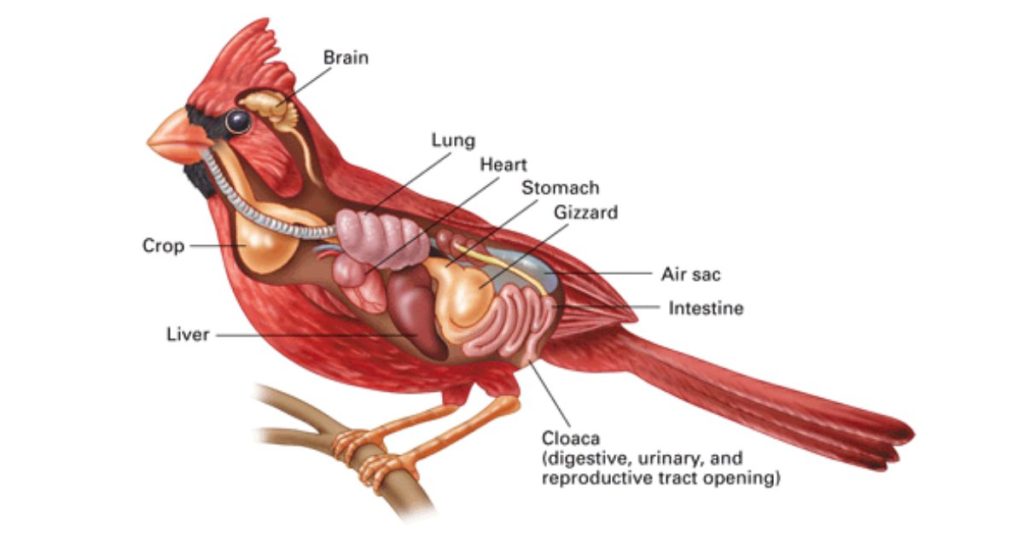
This is basically a muscular pouch full of swallowed grit and stones that act like a food grinder at the start of the bird’s digestive tract. There’s fossil evidence for gizzards in birds as well as other dinosaurs, so this seems to be something that evolved fairly early on, so with their gizzards doing the chewing, birds could lose their teeth while still eating varied diets and varied habitats.
Parts of Beak
A bird’s beak is composed of an upper and lower bony jaw covered by a thick layer of keratin, a structural protein, the same substance that forms skin, feathers, scales, fingernails, and turtle shells.
How beak replacement helped birds?
Being light makes getting into the air easier and reduces the metabolic cost of flying, and anything that reduces energy expenditure adds to the survival quotient.
When a bird is threatened, it will fly, yet it is just too heavy to fly any distance. Lightweight is critical to sustained flight. The heavier the bird, the more muscle power is required to lift the weight, which requires bigger wings to provide more lift, adding more weight demand for even more power.
To adapt, these birds lost weight so they could take to the air easily, the beak replaced heavy teeth, and many bones fused together or were completely lost. Some thoracic (chest) vertebrae melded, eliminating some individual bones and stiffening the back to support the flight muscles.
Types of bills
Beaks range in size along with differing shapes, styles, and lengths came different feeding styles.
Among passerines, two bill shapes predominate.
Insectivores like warblers usually have quite long, thin, and delicate bills, often with a slight down curve. They are made for speed and delicacy rather than power, to feel into small spaces and snap onto food items that might move quickly but are small and soft enough to be easily managed.

Seedeaters like finches have conical, thick-based bills with sharp cutting edges and a strong bite, suitable for crushing seeds so that indigestible husks can be discarded.

Omnivores, such as vireos and thrushes, have an intermediate bill shape slim enough to probe but strong enough to squash fruits and softer seeds.

Among other bird groups, bill shapes include the hook tips of birds of prey, to tear gulp-sized pieces of meat from large prey that is held down with the feet,
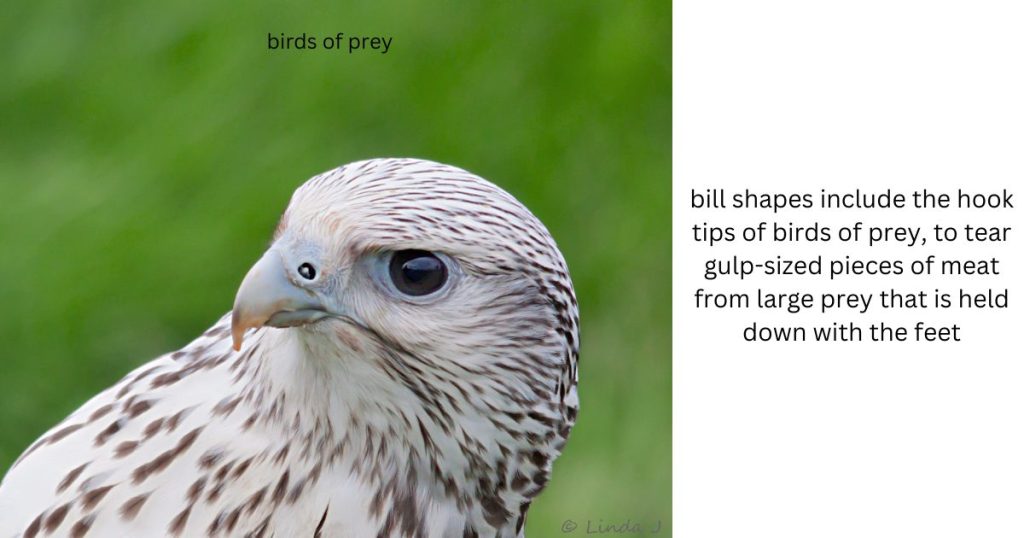
and the sensitive flattened bills of ducks and some other aquatic birds, to filter food items from water.
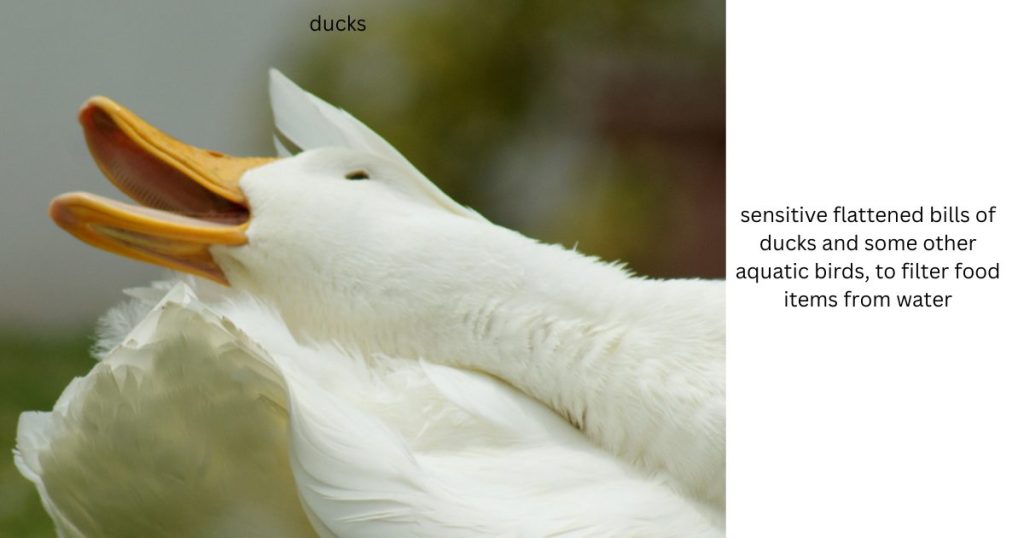
Sea ducks, like scoters, have thick-based bills and use crushing actions with the bill and manipulation with their relatively large and thick tongue to discard the shells of their mollusk prey before swallowing.
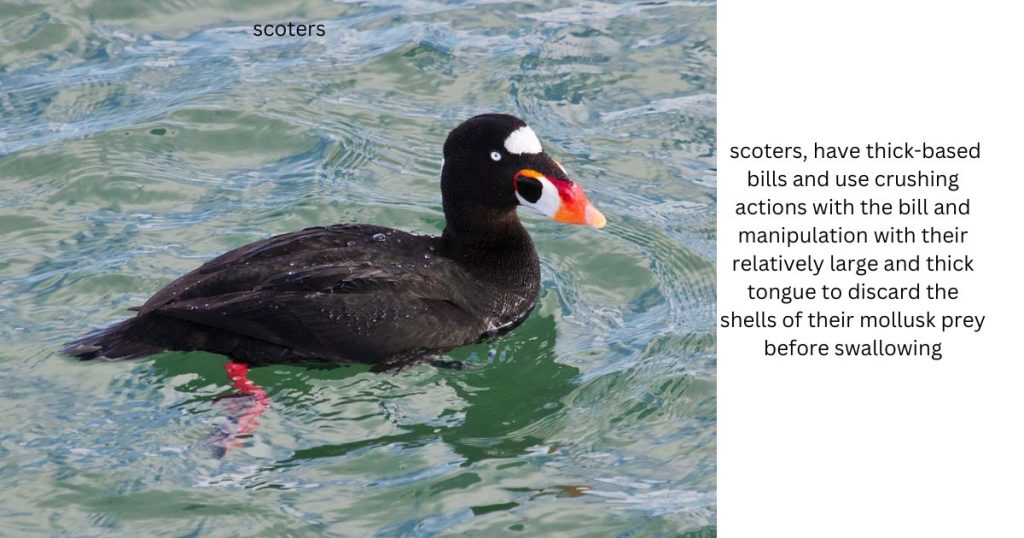
Bills often serve as sexual signals as well. Male Zebra Finches with bright bills attract females, as do puffins with multicolored beaks. Bird bills also help to regulate body temperature by radiating heat, partially compensating for birds’ lack of sweat glands. So sometimes, there is a bit of a compromise among the functions of the bill, but eating is the highest priority.
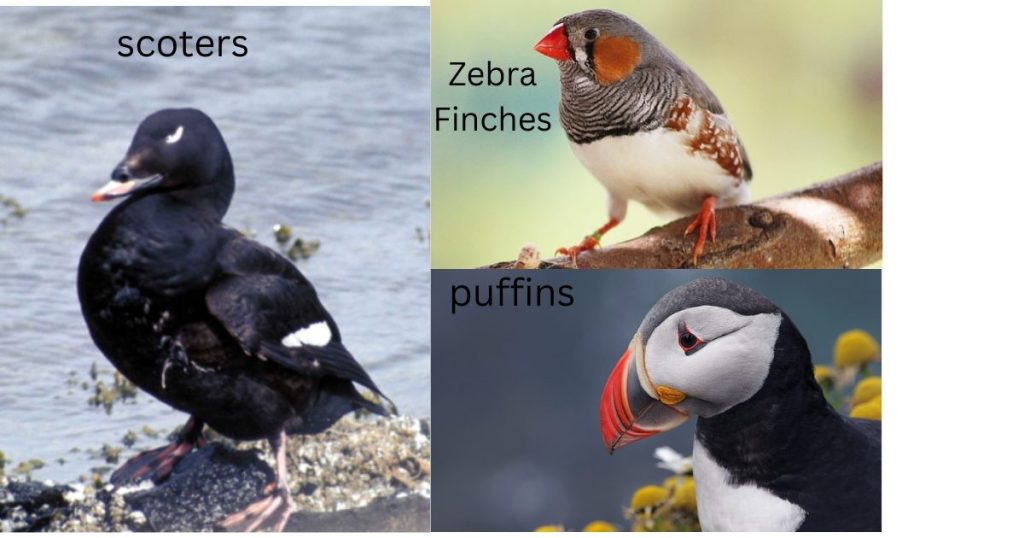
This diversity of bill shape allows the birds to coexist without competing too closely for food. They each occupy their feeding niche.
As such, their bills and associated mode of feeding can be described as evolutionary adaptations which enhance their survival by reducing the interspecific competition that they experience.
Tongue varieties
Most birds have a relatively small, simple, pointed tongue that fits into the lower mandible. It is supported by small bones and has some backward-pointing spines near the base to aid swallowing.
Exceptions include the parrots, which use their thick, round-tipped tongues, almost like fingers, to move food items around in their mouths; the tongue is also involved in sound production. Lorikeets, which are nectar-eating parrots, have brushlike tongue tips for soaking up their liquid diet.
Hummingbirds’ long tongues are fork-tipped, the tips coming together to trap nectar. The upper part of the tongue then bends, which generates a pumping action that pulls nectar into the mouth.
Woodpeckers use their extremely long, spiny, and sticky tongues to collect insect prey from deep crevices in tree bark and from ant burrows in the ground.
Penguins’ tongues are entirely spiny, providing extra grip on their slippery prey as they swallow.
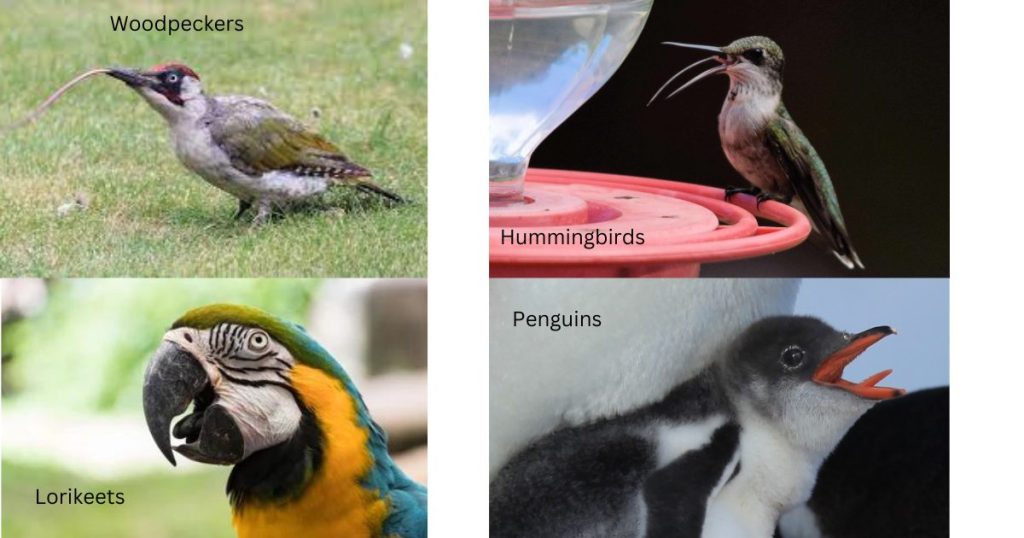
Other dietary adaptations
There is very little plant or animal material not eaten by at least some species of birds. Even notoriously hard-to-digest foodstuffs like tough grass blades, or decaying meat, are the staple diet of certain birds. Their digestive systems show a range of adaptations to cope.
Organic matter is made up primarily of carbon, hydrogen, and oxygen. Atoms of these elements are held together with chemical bonds in molecules of various types. Some molecules are chainlike, some ring-shaped, and many are large and complex, incorporating both chains and rings, as well as additional twists and folds. The strength and number of the bonds affect how easily they can be broken down into small, simple molecules.
Grasses contain the tough carbohydrates cellulose and lignin. Most animals cannot digest these compounds at all, but birds that feed on grass, such as geese, are thought to be able to break it down to some extent thanks to fermentation by specialized bacteria present in their exceptionally long ceca. Bearded Vultures are among the few birds that can digest bone, thanks to very powerful stomach acid, and indeed the species’ diet may be up to 90 percent old dried bone pieces.
All birds have a community of gut bacteria, which provides various benefits, including helping with the breakdown of food and removing toxins. Some of the toxins that may be present in the digestive tract are produced by other nonresident bacteria that the bird has consumed. Carrion-feeders like the New World vultures eat a large quantity of material that has already begun to decay and contains potentially harmful bacteria. To compensate for this, the vultures’ digestive system is acidic enough to kill off most of these bacteria, and these birds also have a much higher tolerance than most to the toxins released by pathogenic bacteria.
Hummingbirds, feeding primarily on nectar, have an extremely rapid digestive transit—the crop empties fully in just 15–20 minutes (this takes more than an hour in most birds). Nectar moves directly from the crop to the small intestine only solid objects like tiny insects spend time in the stomach for processing and become available as a fuel source almost immediately. The entire digestive process takes less than an hour, and some 97 percent of the sugars consumed are absorbed.
How birds drink water
Most birds drink by taking water into their mouths, sometimes using the tongue as a scoop, and tipping their heads up to swallow. Pigeons and doves can suck up water directly; water is drawn into the almost-closed bill through capillary action (the tendency of fluids to rise within a narrow tube) and pumped into the throat with the pushing motions of the tongue. Seabirds that drink seawater can excrete excess salt via the salt glands in front of their eyes.
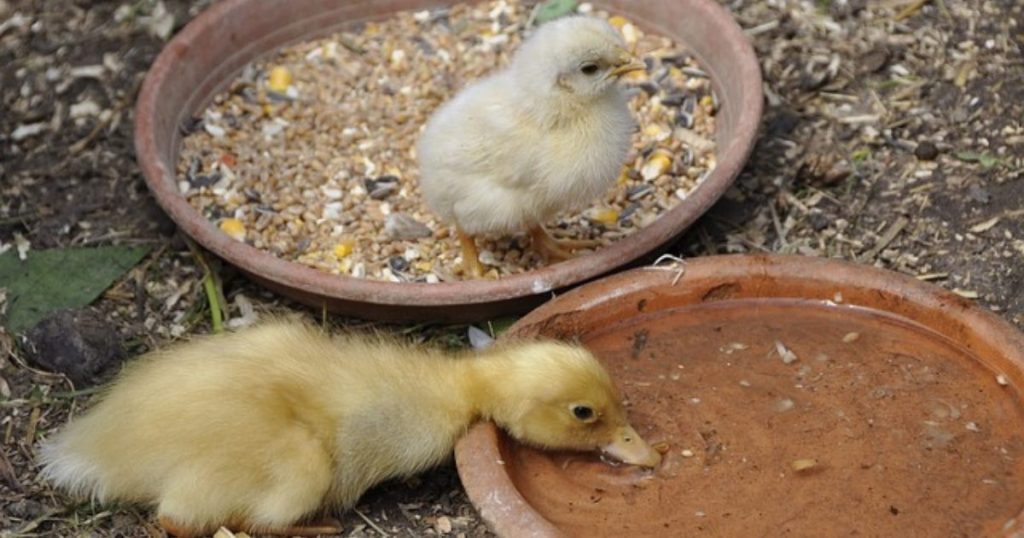
Feeding chicks
Some of the foods swallowed by birds could harm them; this is a particular risk for very young birds. When collecting food for their chicks, insectivorous birds will decapitate large beetle larvae that might attempt to chew their way out of the body if swallowed alive. You may see an adult grebe feeding soft feathers to its chicks along with whole small fish. The feathers are thought to help protect the young bird’s digestive tract from being damaged by sharp fish bones or spines.
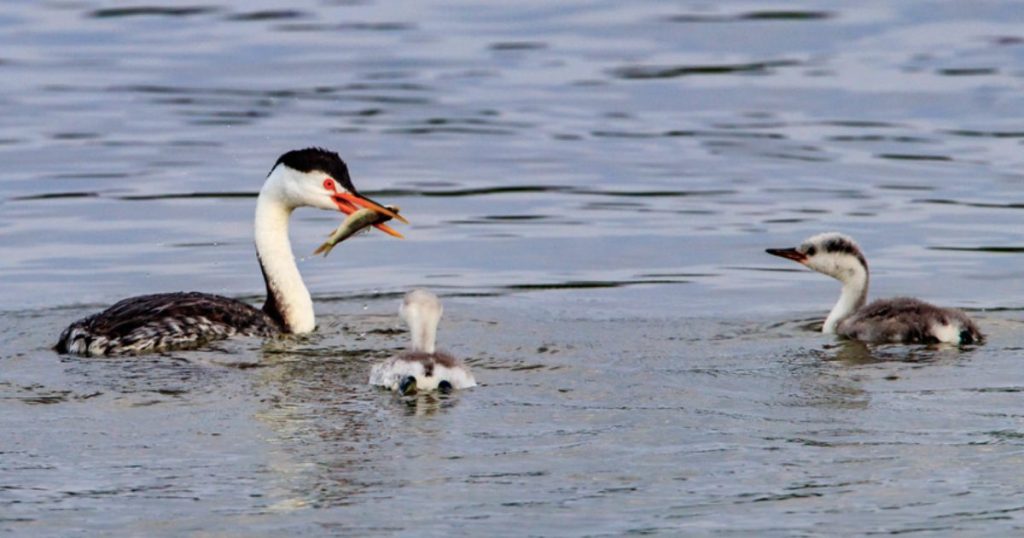
This may explain in part why birds have become so much more varied and widespread than other groups of beaked animals, and these days, modern birds have used their toothless flexible beaks to live in just about every habitat on the planet.